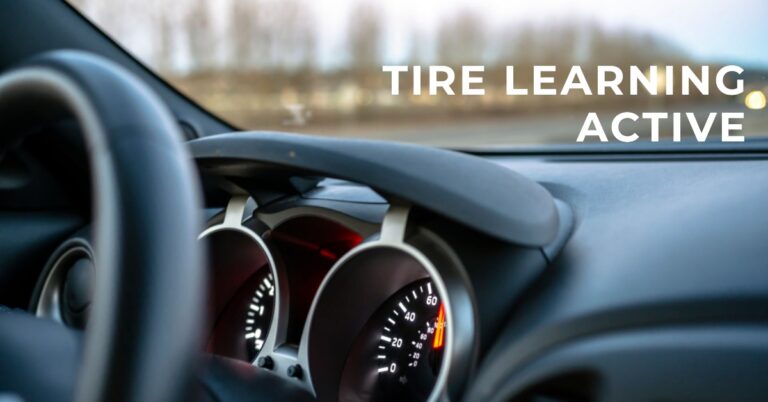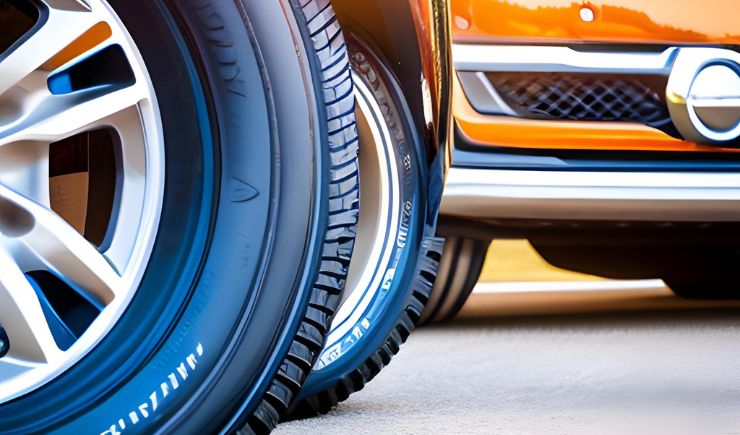What Causes Tire Chunking

Tire chunking is a dangerous problem that can cause serious accidents and fatalities. As an expert in the field, I’ve studied tire chunking for many years to understand what causes it so we can prevent such tragedies from happening.
Through my research, I’ve determined several key factors that lead to this phenomenon. In this article, I’ll explain each of these root causes and provide advice on how to mitigate them.
Tire chunking occurs when pieces of rubber break off from the tread surface due to excessive wear or other damage. The resulting chunks of rubber can travel at high speeds and potentially strike other vehicles, causing significant property damage as well as potential bodily harm.
To ensure safe driving conditions, it’s important that motorists recognize the primary culprits behind tire chunking and take measures to reduce their risk of experiencing it.
Table of Contents
- Poor Maintenance
- Overloading
- Incorrect Inflation
- Driving On Rough Terrain
- Hitting Large Potholes
- Frequently Asked Questions
- Conclusion
Poor Maintenance
The cause of tire chunking is no laughing matter. It’s a serious issue that can have disastrous consequences, both for the driver and the vehicle. As such, it should not be taken lightly when considering preventative measures.
Poor maintenance is one factor that could lead to this dangerous condition developing on your tires. Regularly checking your tread depth and inflating or replacing them as necessary are key components in maintaining healthy rubber. Without proper inflation levels, the sidewall flexion increases which weakens the structural integrity of the tire itself; leading to potentially hazardous conditions when driving at speed or negotiating sharp turns.
Moreover, worn-down treads become more susceptible to punctures and cuts from road debris – further contributing towards an increased risk of tire failure. Ultimately, it pays dividends to ensure you keep up with routine maintenance checks on your car’s tires – especially if they’re particularly old or showing signs of wear & tear.
Overloading next becomes another pertinent area for consideration…
Overloading

The lack of proper maintenance can contribute to tire chunking, but another common cause is overloading. When a vehicle’s tires are overloaded, the extra weight increases the stress on the tires and can cause them to break apart due to fatigue.
This kind of damage usually begins at the edges of the tread, which causes chunks of rubber to separate from the tire.
If you consistently drive with more passengers or cargo than your tires are designed for, it could result in premature wear and tear that leads to tire chunking.
Another way that tires can become damaged is through incorrect inflation. Incorrectly inflated tires not only lead to decreased fuel efficiency and an uncomfortable ride, they also put additional strain on the sidewalls which may cause them to eventually fail.
Uneven pressure distribution across all four tires means that some parts will be subjected to higher levels of stress than others, resulting in uneven wear patterns and possibly even blowouts. It’s critical that drivers ensure their vehicles’ tires are properly maintained and inflated in order to reduce any risk of accidents caused by tire failure. Without proper care and attention, significant issues such as chunking or blowouts can occur, leading to potentially dangerous situations on the road.
To prevent this from occurring, it’s essential for drivers to check their car’s manual for instructions about how much air should be in each tire and regularly inspect their tires for signs of excessive wear before taking a trip.
Incorrect Inflation
Tire chunking is an inevitable struggle for drivers, but how does it happen? It all starts with incorrect inflation.
It’s a problem that can quickly develop and become dangerous if left unchecked. When tires are not properly inflated to the manufacturer’s recommended level, they can cause a great deal of damage over time.
This can manifest itself in several ways, such as under-inflation causing excessive wear or over-inflation leading to increased pressure on the sidewalls, both resulting in tire chunks.
Furthermore, when driving on rough terrain, an improperly inflated tire will be more susceptible to being punctured by rocks and other objects due to its weakened state.
Incorrectly inflated tires don’t just lead to physical destruction; they also put drivers at risk through reduced grip and handling characteristics. With less air in the tire, there is less contact between the road and rubber which causes decreased cornering performance and overall stability during braking maneuvers – something no driver wants!
It’s clear that preventing tire chunking begins with proper maintenance so that you can drive safely without incident. Ensuring your tires are correctly inflated from the start goes a long way towards avoiding costly repairs down the line – particularly when driving on rough terrain.
Driving On Rough Terrain
Tire chunking can be caused by driving on rough terrain. From gravel roads to off-roading, the uneven surface of unpaved surfaces or rock formations create a series of sharp impacts that can cause chunks to break away from your tire’s treads.
The jagged edges of rocks and other debris also increase the risk for tire damage due to increased puncturing and sidewall cuts. To prevent significant damage, drivers should take extra caution when navigating these types of terrains or use tires specifically designed for this type of activity.
Driving too fast over bumpy, rocky trails is another common mistake made by amateur off-roaders that often results in tire chunking. High speeds coupled with unexpected obstacles like potholes or large stones increases the likelihood of chipped rubber pieces coming loose from their treads.
Additionally, sudden changes in speed while traversing rougher areas also puts more strain on your vehicle’s tires than normal conditions as they’re forced to quickly adjust to varying levels of impact intensity.
In order to avoid tire chunking while driving off-road, it’s important to maintain an appropriate speed depending on the condition of the terrain you’re travelling through and always keep an eye out for any potential hazards that could result in serious damage.
With adequate preparation and knowledge about what causes tire chunking, you can confidently navigate even the most challenging paths without risking major injury or costly repairs along the way.
With such risks looming around each corner, hitting large potholes becomes yet another dangerous hazard many drivers must face when venturing off-road.
Hitting Large Potholes
Tire chunking can be caused by hitting large potholes. When a car collides with a deep and wide enough pothole, the force of impact is great enough to cause significant damage to all components of your tire – from the sidewall, tread blocks, and even down to the belts inside.
The severity of this damage depends on several factors: the size and depth of the hole; how fast you were driving when you hit it; whether or not your tires are properly inflated; and if they’re in good condition overall. If these conditions are combined, then tire chunking becomes much more likely.
It’s important for drivers to remember that prevention is key to avoiding tire chunking.
Here are some tips for staying safe on the roads whenever possible:
- Avoid driving too close to curbs and overhanging objects where there may be unseen potholes
- Make sure that your tires have adequate air pressure before going out on long trips
- Replace any worn or damaged tires as soon as possible
Being mindful while behind the wheel will reduce your chances of experiencing costly repairs due to tire chunking caused by hitting large potholes. Taking extra precautions could save you time, money, and even prevent an accident due to poor traction control or vehicle handling after damaging one or more tires.
Frequently Asked Questions
What Type Of Maintenance Should I Do To Prevent Tire Chunking?
Tire chunking can be prevented by taking simple steps in maintenance.
It’s important to check air pressure and tire tread depth regularly, especially if you’re driving on rough terrain often.
Having the right type of tires for your vehicle is also key – make sure they are suited for the conditions you’ll be driving in.
Additionally, it’s best to have your wheels aligned at least once a year; this helps ensure that your car runs smoothly and keeps your tires from wearing down prematurely.
Taking these steps will help keep tire chunking away!
How Do I Know If My Tires Are Overloaded?
Tire chunking can be a frustrating experience for vehicle owners. To prevent such an unfortunate occurrence, it is important to stay aware of the load being carried on your tires and assess whether or not they are overloaded.
Signs that your tires might have too much weight include uneven tread wear, decreased fuel efficiency, vibrations while driving, and bulging sidewalls.
If you notice any of these symptoms in your tires, take time to unload some of the weight or replace them with heavier-duty models as soon as possible.
How Often Should I Check My Tire Pressure?
It is important to check your tire pressure regularly, as low or high air pressure can cause tires to chunk.
At least once a month, you should use an accurate tire gauge to ensure that all the tires have been inflated properly and are at their manufacturer-recommended levels.
If they’re not, fill them up with air according to the car manual guidelines.
Also, it’s worth checking the treads of each tire for any signs of wear and tear or rough patches which could indicate damage caused by overloading or improper inflation.
Taking these steps will help keep your tires in top condition and reduce the risk of chunking.
What Is The Best Way To Drive On Rough Terrain?
When it comes to driving on rough terrain, the old adage ‘prevention is better than cure’ rings true.
As an expert in tire chunking prevention, I always recommend that drivers adjust their speed accordingly and avoid making sudden changes in direction or braking hard when going over bumps.
It’s also important to ensure proper tire inflation for improved shock absorption; this will help reduce the risk of your tires taking a beating from harsh surfaces like dirt roads or rocky paths.
By following these simple steps you can help keep your tires intact and make sure you reach your destination safely.
How Can I Avoid Hitting Large Potholes?
Avoiding large potholes is essential to avoiding tire chunking.
The best way to prevent hitting a pothole is by slowing down when you see one ahead and carefully maneuver around it, or if the lane doesn’t provide enough space to safely do so, drive over the pothole at an angle with your wheels aligned straight in order to reduce impact.
It’s also important to regularly inspect your tires for any damage that may have been caused by previous encounters with potholes.
Keeping on top of tire maintenance can help keep your vehicle safe from potential issues.
Conclusion
Overall, tire chunking can be prevented with regular maintenance and proper driving techniques.
To ensure your tires remain in good condition, check the pressure often and drive as smoothly as possible on rough terrain.
Avoid hitting large potholes – if you can’t dodge them completely it’s best to slow down before running into one. That way, you’ll give yourself more of a fighting chance at avoiding any serious damage.
The key takeaway here is that an ounce of prevention is worth a pound of cure when it comes to tire chunking.
Don’t let your vehicle take a beating from unnecessary wear and tear; stay ahead of the game by properly caring for your tires so they don’t fail you unexpectedly down the line.
It’s better to treat small issues now rather than waiting until they become bigger problems later!






